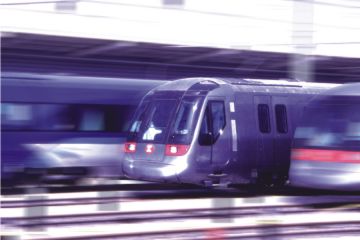
Introduction
4.1 In terms of patronage, railways are forecast to handle about 40% to 50% of the total public transport passenger boardings by 2016, increasing from 33% in 1997. They will also confer considerable environmental benefits. Thus rail should and will form the backbone of the passenger transport system and the development of rail stations should synchronise with land-use development. The West Rail (Phase I), MTR Tseung Kwan O Extension, Ma On Shan Railway, Tsim Sha Tsui Extension and Sheung Shui to Lok Ma Chau Spur Line have been designated as priority rail projects. On completion of these projects all new towns will be linked to the rail system, providing fast and comfortable travel between these towns and to the core urban area. Unlike Tuen Mun New Town in the seventies, the future Tseung Kwan O, Ma On Shan and other strategic growth areas will be served by railways in good time. At the same time as CTS-3, the Second Railway Development Study (RDS-2) has been investigating the need for new railways, with CTS-3 providing the broad corridor demands and RDS-2 going into more detail. The results described below have been passed to RDS-2 for their consideration in drawing up detailed plans for the future railway system.
4.2 CTS-3 has investigated the ways that rail travel can relieve the road system, and in particular how railways may be used to service major concentrations of population and employment.
4.3 In order to make the best use of the rail system, it will be necessary to augment the concept of trunk and feeder services. The function of public transport interchanges in promoting such a concept is discussed in the following chapter.
Additional Needs
4.4 The cases for additional railways can be divided into three categories:
|
|
|

Need for new railways
4.5 CTS-3 has assessed the railway demands in the public transport system and identified at least four major mass transportation corridors that could be served by rail. They include:
|
|
|
|
4.6 Taking on board the railway corridor travel demand identified by CTS-3, RDS-2 has come up with some initial ideas of potential railway corridors as shown in Figure 4.1 and possible railway network development in Figure 4.2 for further examination in the continuing work of RDS-2.
Note: The information of the report was valid at the time when it was published. It might not remain so as at the date when this webpage was reviewed / revised. Please refer to the first page of the report for its publication date.